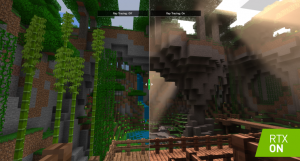Earlier this year, Carla Engelbrecht flew to Phoenix, sat on the couch in a stranger’s living room, and observed the stranger watching—or possibly playing or experiencing—a movie-length installment of Black Mirror. In the film, called Bandersnatch, a young English programmer named Stefan tries to adapt a nonlinear fantasy novel into a nonlinear videogame, and the result is itself a nonlinear story in which the viewer exerts influence over the plot. Using a remote or videogame controller, the viewer makes choices about what Stefan should eat for breakfast and whether he should kill his father. As the director of product innovation at Netflix and an architect of this unusual form of entertainment, Engelbrecht was intent on studying the emotional responses of Netflix subscribers to Bandersnatch‘s choose-your-own-adventure approach.
The woman sitting beside Engelbrecht reported that, while watching the movie, she had “just wanted Stefan to get a good job, finish the game, and meet a nice girl,” Engelbrecht tells me later. “She’d completely forgotten that this was Black Mirror”—a frequently dark and sometimes meta science-fiction show about the human relationship to technology—“but she had this deep empathy, and she was so invested in his success.” Engelbrecht was pleased by the observation, but not every viewer felt similarly engaged; reviews of Bandersnatch were as varied as the pathways through it. Though critics praised its intrepid originality, they often found the process stressful or irritating. Many of the choices “read as eye-roll-worthy contrivances only a small child would get excited about,” remarked one New York Times review.
If Bandersnatch was not an unmitigated success, it was, from Netflix’s point of view, a peek into a possible future. In a 2016 interview, Reed Hastings, the company’s cofounder and CEO, predicted that “new forms of entertainment will supplant movies and TV shows.” Two years later, in an earnings report, Netflix stated that it competes more with Fortnite, the massively popular online videogame, than it does with HBO. This past July, Netflix announced it had lost 126,000 US subscribers, its first quarterly drop in eight years. Engelbrecht’s work could—if viewers play along—chart a course for how Netflix stays relevant and designs ever more bingeable stories. As Andy Weil, Netflix’s director of original series, puts it: “Carla’s the authority on what’s possible.”
Nonlinear TV is far less passive than the comforting, familiar rhythm of a 22-minute multicam sitcom, the type of show CBS might refer to as “dishes and laundry” (activities one can do while lightly following along), or a procedural whose formula one can breezily jot down on a whiteboard in a writers’ room. Engelbrecht wants viewers to become more involved participants in the stories they consume. In her mind, adding choice to the narrative can be a way for television to engage us more deeply. “You’re taking in information and deciding, but the decisions get harder and harder,” she says. “So you start to feel the emotional impact of making these decisions.” But even Engelbrecht, who developed and implemented Bandersnatch‘s interactive framework, admits to an initial reluctance. “My fear,” she says, “has always been that the act of making a choice would break the magic of storytelling in live-action video—that the two couldn’t coexist.”
Engelbrecht, who is 42, grew up outside Syracuse, New York. As a kid, she coded fortune-telling programs on her parents’ Texas Instruments computer and enjoyed games like Oregon Trail and Zork, which she played with paper and pen so she could track and draw the maps. “You’d have the best of both worlds, where you’d get to read and also interact,” Engelbrecht says. She remembers her enthusiasm for the 1985 mystery film Clue, which has three different endings.
The novelist Yiyun Li has written that her motivation for reading fiction is “to be with people who, unlike those around one, do not notice one’s existence.” Engelbrecht, however, has never required such distance. Her style may align more closely with that of Julio Cortázar, the Argentine author of such experimental works as Hopscotch, who said that “literature is a form of play” and should aspire to be a game both “profound and serious.” Even when Engelbrecht was young, the boundary dividing characters from viewers seemed a little porous. “My mom referred to soap operas as ‘I’m watching my characters!’—it was a relationship,” she says. She felt a version of this herself, wondering, “What is my relationship with the story?”
Engelbrecht’s work in interactive TV could—if viewers play along—chart a course for how Netflix stays relevant and designs ever more bingeable stories.
At college, where Engelbrecht studied political science, she gravitated to journalism, later applying for jobs at National Geographic, Motor Trend, and Highlights for Children. She landed at Highlights, a monthly publication whose mission is to “help children become their best selves.” Engelbrecht sees her time there as “this world of play,” she says. As part of the job, she’d go into schools and watch how kids interacted with media. She took those observations to PBS Kids and Sesame Workshop and eventually to a doctorate program in education at Columbia University, where she studied the social dynamics of videogame usage. Before graduating, she founded a game design consulting firm, No Crusts Interactive, which helped create four Sesame Street games. (She has never managed to dislodge the Elmo song from her head.) Around that time, Engelbrecht met with Todd Yellin, VP of product at Netflix, for a possible job. During the interview process, they talked about the possibility of pursuing interactive stories.
In 2014, Engelbrecht joined Netflix as the manager of kids’ products, combining her interests in game design and education. She saw Netflix as a giant system to be interacted with, and she and Yellin started experimenting with nonlinear, or “branching,” shows for children. “We knew if we couldn’t make this work for kids, it would never work for adults,” Engelbrecht says. “There’s a more inherent willingness to interact in kids,” who are often better versed in typing and swiping. Over the following years, Engelbrecht and Yellin rolled out a series of interactive shows for children and young adults: Buddy Thunderstruck: The Maybe Pile; Puss in Book: Trapped in an Epic Tale; and, most recently, You vs. Wild, a reality show in which you try to keep professional adventurer Bear Grylls alive. Though viewers can passively let the programs make choices for them, Netflix says 94 percent of You vs. Wild and Bandersnatch viewers took an active role.
According to trends Engelbrecht has gleaned from Netflix’s research, parents enjoy watching their children consider the ramifications of their decisions. A child who’s tempted to make a choice that provides some thrill or gross hilarity—force Grylls to eat poo, say—might then display concern, electing to have Grylls go foraging instead. Much as the woman in Phoenix had wanted Stefan to succeed, both children and adults seem to feel sympathy for the characters whose lives they momentarily control. In some cases, Engelbrecht has also noticed more of a willingness to act out, an approach she refers to as “vicarious catharsis.” Certain adults, steeped in the twin enticements of videogame-like joy and a momentary reversion to childhood, savor the chance in Bandersnatch to make a choice between “kick him in the balls” or “karate chop the dad,” she says.
Stuart Hendry/Netflix
Engelbrecht still plays videogames. One of her favorites is the indie exploration game Dear Esther. It’s a first-person-shooter construct, but with no guns or visible characters; the player walks around an island listening to a narration of a man’s letters to his dead wife. In one key sequence, the player goes down to the beach, where the water glistens ominously. “The player can walk into the water,” Engelbrecht says. “And as you do that, it’s designed in such a way that you realize you’re drowning.” The experiential power of the narrative moved her to tears. She felt equally invested in Papers, Please, a game where the user acts as a border control agent. “You’re being drawn into the empathy of the moment,” she says, “the tie to the character.”
Nobody quite knows how to categorize interactive TV yet. It could be a genre or a new kind of story. Its history is spotty. In the late ’70s, Warner Amex Cable Communications introduced something called the Qube system, where viewers could, among other things, vote on issues during talk shows. It was a flop. A few decades later, Mitchell Kertzman, then the chair of Liberate Technologies, told The New York Times: “It sounds like interactive television is about making television harder to watch, like I have to work at television when I just want to watch it.”
Literature offers cautionary tales. Jorge Luis Borges’ 1941 story “The Garden of Forking Paths” imagines a novel in which every possible choice plays out simultaneously. The branching narrative, described by one character as a “tenuous nightmare,” would eventually inform the creation of hypertext fiction, an arcane literary experiment of the early internet that tried to share control with the reader and was navigated by clicking textual links. In his 1992 treatise “The End of Books,” Robert Coover, a writer of short stories and metafiction who thought hypertext might be the future of reading, wrote that “much of the novel’s alleged power is embedded in the line, that compulsory author-directed movement from the beginning of a sentence to its period, from the top of the page to the bottom, from the first page to the last.” Many authors have challenged the power of the line—David Foster Wallace’s footnotes draw readers up and down the page, trying to change the mechanism of their attention; Alejandro Zambra’s novel Multiple Choice breaks up flow by using the structure of a standardized test—but in Coover’s mind, freedom from the “tyranny of the line” would only be possible with hypertext, a new form to match its content. As a storytelling technique, it never took off.
Authorities on form remind us that, even in 2019, stories have three parts (a beginning, a middle, and an end), and screenplays have three acts (the setup, the conflict, and the resolution). “Story is about eternal, universal forms,” Robert McKee writes at the start of Story, his famous guru-guide. Other how-to books like Save the Cat! give a by-the-minute pattern for screenwriting, using the broad template of the hero’s journey narrative. And development executives tell writers to give characters agency and show their influence in the outcome of the plot—all of this in order to make narrative tantalizing to viewers.
Interactive television leads to a total rethink of these concepts. Stories can be more individualized, while still existing against the backdrop of a communal artistic experience. When Engelbrecht traipsed across Phoenix to gauge responses to Bandersnatch, which ended up with two Emmy Award nominations, she witnessed endearing scenes of group television consumption on sofas. Though one might think of interactive TV as more of an individual activity, Engelbrecht observed “people watching together, connecting over these moments.” We’re talking in a small conference room within a maze of glass-walled space at Netflix’s office in Los Gatos, California. Around the corner is a cafeteria called Guess Who’s Coming to Dinner. Engelbrecht, who has red hair and wears a T-shirt with a maneki-neko Grumpy Cat on it, sits cross-legged in a swiveling chair, intermittently shoeless. “You’d see one person give the side-eye to someone else when they made a certain choice. One woman threw the remote at her fiancé and was like, ‘You choose.’”
“You’d see one person give the side-eye to someone else when they made a certain choice. One woman threw the remote at her fiancé and was like, ‘You choose.’”
Nonlinear TV can “guide you through to the things you’re more inclined toward, so it does feel like a story made for you,” Engelbrecht says. Explicit interactivity could conceivably sway toward implicit interactivity, where the film watches the user—with eye tracking, emotion detection, knowledge of viewing history—and customizes the show to a precise degree. Engelbrecht isn’t going there, though. “The video perfectly constructed for you?” she says, when I pose the possibility. “It sounds like a Black Mirror episode.”
Weil, the Netflix executive, believes audiences relish control. “People like the ability to choose, to affect the story,” he says. Naturally, some of the filmmakers he and Engelbrecht talk to reject that idea. “They’re like, ‘No, I make all the choices’—the idea of, I’m an auteur, that’s what being a filmmaker is,” he says. Engelbrecht sees interactivity as a versatile framework, like the development of seemingly subtle, yet aesthetically and experientially crucial, cinematic techniques. Orson Welles, for instance, decided to put ceilings on film sets. “It feels like such an obvious thing, but until he did it, sets would always be open air,” she says. Ceilings allowed for low-angle shots, heightening a sense of reality.
After seeing willingness—and sometimes “pure glee”—from those who engaged with Netflix’s nonlinear programs, Engelbrecht believes the style will permeate all genres of storytelling, from romance (which doctor should she smooch?) to horror (don’t go down that hallway!) to teen, action, reality, and documentary. The next experiment is an interactive series finale for Tina Fey’s Netflix comedy Unbreakable Kimmy Schmidt, which is currently in postproduction. When the punch lines land, “they’re so powerful, but then you have the added benefit of, you’re participating in the joke,” Engelbrecht says. “You’re part of the story.” At the same time, participation complicates how comedy is written. The foundational questions of timing change when writers know that the action will be interrupted by a user wielding a remote.
Netflix
By making entertainment subject to our own desires, interactive TV and film offers us a more pliable, maybe even more meaningful, viewing experience. On the other hand, it can be thought of as an abdication of responsibility, transmitting possibly undesired autonomy to the viewer. Were the 19th-century novel The Portrait of a Lady presented in interactive form, we might be tempted to intervene in Isabel Archer’s process of “affronting her destiny.” Perhaps we are glad not to have this power of interference.
As they uproot the assumptions of conventional narrative, Engelbrecht and her team often find themselves grappling with a final question: How does it end? Say a viewer makes a series of narratively untenable choices that lead to an impasse—a failed ending, it’s sometimes called. In these cases, where the program must take you back to an earlier fork, “should we kill the main character?” Engelbrecht asks. “It’s like a videogame in that sense, the conceit of which is: No problem, start over.” But TV and film aren’t videogames. They have endings. In Bandersnatch, viewers languishing in Stefan’s universe with no idea of how far they are from the closing credits may tire of the exercise. Other times, they may wish to stay in the world as long as they can, enacting the “unfathomable work” done by the writer in “The Garden of Forking Paths,” whose choices create a multiverse. As Engelbrecht describes the conundrum, her next remark seems inevitable: What, exactly, is an ending?
Hair and makeup by Amy Lawson
When you buy something using the retail links in our stories, we may earn a small affiliate commission. Read more about how this works.
ANTONIA HITCHENS is a writer based in Los Angeles. This is her first story for WIRED.
This article appears in the September issue. Subscribe now.
Let us know what you think about this article. Submit a letter to the editor at mail@wired.com.
- How fans are remaking entertainment in their own image
- How the nerds are reinventing pop culture
- When influencers switch platforms—and bare it all
- Upstart crossword puzzle builders get their point across



